Neuralink is developing a brain—machine interface that connects humans with computers. Initially targeting medical uses, its descendants may ultimately drive the symbiosis between humans and artificial intelligence.

Take a coin-sized panel of microchips, a battery, and 3,072 electrodes distributed along neural threads thinner than human hair. This is a Link. And it goes inside your skull.
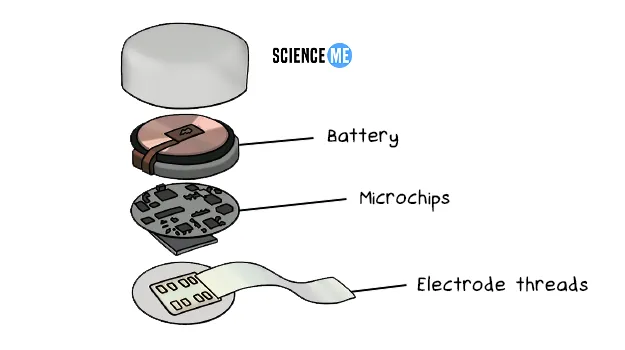
The Link BMI described in Neuralink's 2019 whitepaper.
Neuralink's brain chip has been shown to work successfully in pigs. Pigs! They're basically human. When human trials begin, Neuralink will demonstrate how it can improve the lives of quadriplegics by giving them mind control over their computers.
But wait... don't brain implants already exist? What's special about Neuralink? And what does it all have to do with the rise of artificial intelligence?
| Year | Implant Type | Target Conditions |
| 1977 | Cochlear Implant | Sensorineural hearing loss |
| 1996 | Neurotrophic Electrode | Locked-in syndrome |
| 2002 | Deep Brain Stimulation | Essential tremor, Parkinson's disease, dystonia, obsessive-compulsive disorder |
| 2005 | Neuromotor Prostheses | Severe motor impairment |
| 2018 | Spinal Implant | Spinal cord injury |
A general list of FDA approved neural implants.
What is Neuralink?
Elon Musk founded Neuralink in 2016, investing $100 million in a team of neuroscientists, biochemists, and robotics engineers. In short order, they re-engineered brain implants with three key breakthroughs:
- Higher Bandwidth. Neuralink scaled up the electrode count from around 100 to 3,072 electrodes. They're dotted along 96 neural threads, each about the 1/20th the thickness of a human hair.
- Overnight Charging. The Neuralink has a 12-hour battery life with wireless inductive charging overnight.
- Automated Installation. Neuralink's neurosurgical robot installs the 7-micron-wide electrode threads much deeper, and with greater precision, than any human surgeon.
While this is cutting-edge technology, to the casual observer it looks hideously intrusive. And, of course, it is. But as we saw with the proliferation of computers, brain—machine interfaces will also come to deliver greater functionality in smaller packaging. One day, the whole trepanning aspect will disappear altogether. The rise of nanotechnology means we'll seed our brains with neural nanorobots to link us with machines.
But why would we do this? Assuming we don't suffer from paralysis or a debilitating neurological condition, why would we even want to meddle with our fragile grey and white matter?
What Does Neuralink Do?
"I created [Neuralink] specifically to address the AI symbiosis problem, which I think is an existential threat." - Elon Musk
Musk makes no secret of the fact that the medical applications of Neuralink are a gateway to commercial use. The initial goal of Neuralink is to give people with paralysis more independence in their day-to-day lives. They'll be able to control their computers and mobile devices with their minds—to send emails, browse the internet, and express creativity.
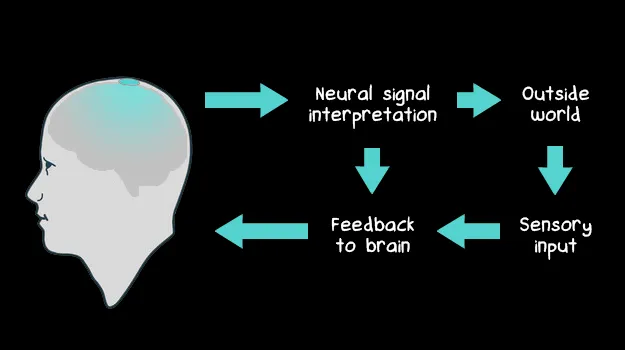
The Link allows users to control their devices with their minds.
Next, Neuralink will enable amputees to control prosthetic limbs with sensory feedback. And when placed at key motor neuron clusters, the technology will enable paraplegics to walk with their own two legs. Other therapeutic targets include deafness, blindness, addiction, and a range of neurological diseases.
"It could, in principle, fix anything that's wrong with the brain." - Elon Musk
This is the right approach; fix what's broken before you start adding bonus features. And it's the bonus features that has some neuroscientists sceptical.
Musk says Neuralink will one day offer endless upgrades, from cognitive enhancement to mind-controlled virtual realities. Hypothetically, users will be able to scroll through a Neuralink app store and choose what to install.
This will require a two-way interface, where the electrodes both transmit and receive signals to and from the brain. The principle is already proven in traditional brain implants, but much more research is needed to execute it as Musk describes.
More on this in a moment. First, let's look at how Neuralink works at the cellular level.
How Does Neuralink Work?
Brain cells, called neurons, are essentially tiny electrical devices. They communicate across networks using chemical signals (neurotransmitters) which excite or inhibit electrical signals (action potentials).
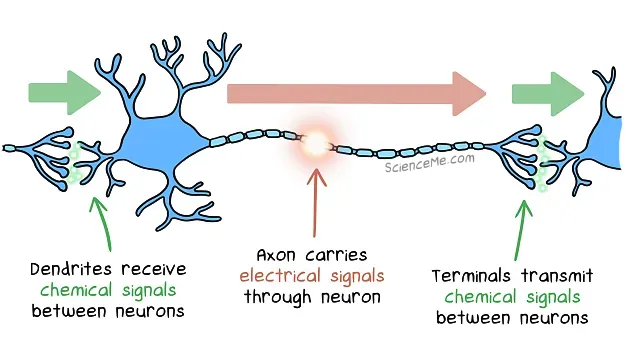
How neurons communicate using chemical and electrical signals.
This chatter between neurons fires across networks, giving rise to brain functions like visual processing, memory retrieval, and language.
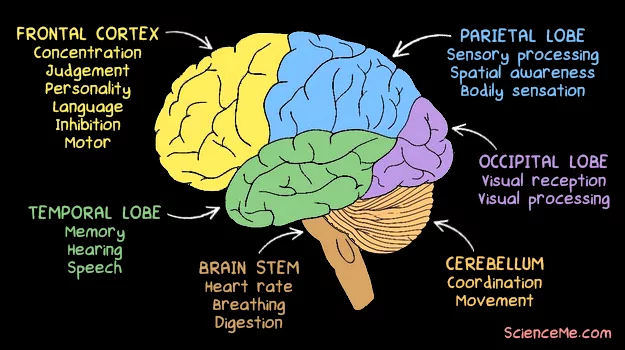
The brain processes a vast array of information to sense and react to the world.
This knowledge stems from 200 years of brain research. From the decapitation experiments of Legallois that first identified brain regions, to Cajal's discovery of neurons as functional units of the brain. Today, neuroscientists have a respectable understanding of how the brain works. But we need to learn more.
Cue Neuralink, which, in spite of its critics, will almost certainly further our understanding of the human brain.
Neuralink works by placing neural threads alongside neurons. The threads can then detect (and will ultimately transmit) tiny electrical signals to neurons to join the conversation.
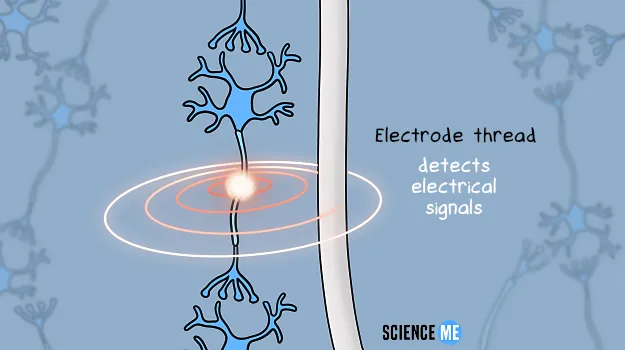
Neuralink works using electrode threads to detect electrical signals within neural networks.
These neural signals are decoded by four microchips in the body of the Link, which sits just outside the brain and flush with the skull. When the data is sent wirelessly to a computer up to 10 metres away, it creates a direct link between mind and machine.
Is it really that simple? Don't we need to know exactly what each neuron does before we start executing its impulses?
Indeed we do. As with much neuroscience, there's a heavy reliance on identifying correlations between brain activity and experience. Not only is this necessary due to the scale and complexity of neural networks, but because the layout and function of neurons in every brain is different.
Neuralink detects these correlations with an initial calibration period. Neural activity is recorded while the user performs—or simply thinks about—a task like moving a computer cursor. Mathematical modelling enables the decoder to discover correlations between thoughts and desired actions, so the system becomes primed for a particular user.
Neuralink Trials to Date
So far, Neuralink has been demonstrated in two animal species.
Gertrude the pig has a Link. Filmed in 2020, the Neuralink pig demonstration shows real-time correlations between neural signals and Gertrude's snuffling activity. Elon Musk also presents pigs with multiple implants installed, and demonstrates real-time predictions of porcine joint movements based on neural data.
Pager is a macaque that can play Mind Pong. This 2021 demonstration explains how Pager learned to play simple video games with a joystick, while Neuralink's decoding algorithms formed associations between his neural activity and specific desired actions. After this calibration period, Pager was able to play Pong completely hands-free.
Is Neuralink Safe?
Historically, the main risks from brain implants actually arise from the surgical insertion. This is traditionally performed by a surgeon while the patient is under general anaesthesia.
The biggest concern is that the surgeon nicks a blood vessel or otherwise damages neural tissue while inserting the electrodes, leading to permanent brain damage. There's also the risk of any lengthy general anaesthesia causing permanent side effects like postoperative cognitive dysfunction.
Neuralink intends to mitigate these risks with its neurosurgical robot. As terrifying as that sounds, robotic surgery has been in use since the 1980s and is now ubiquitous in minimally invasive surgeries.
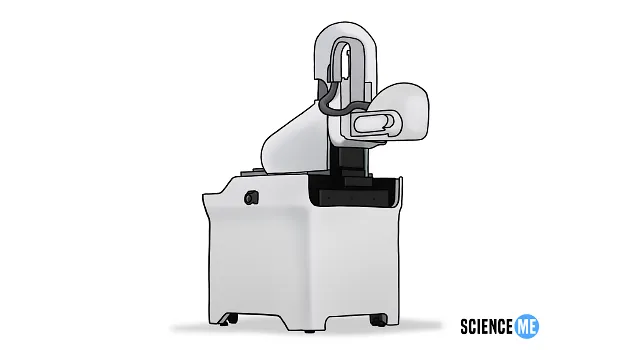
The Neuralink surgical robot.
The Neuralink robot is essential for installing the 96 electrode threads, which are just 0.007mm thick (compare this to DBS wires at 1.36mm thick). It works faster than human hands, installing six electrode threads per minute, such that the most invasive part of the procedure is over in less than twenty minutes.
Eventually, the Link will be installed while recipients are awake, eliminating the risks of general anaesthesia altogether. Pain will be managed with local anaesthesia, and anxiety reduced with sedatives or, if you prefer, a bit of old-fashioned grit.
Once installed, the brain has its own reaction to an implant. For instance, DBS electrodes are thick and rigid enough to provoke chronic inflammation. Glial cells, which provide physical and metabolic support to neurons, contribute to scarring between brain tissue and electrodes, ultimately degrading the interface. Neuralink's answer lies in using much finer and more flexible neural threads which evade the immune response.
How Will Neuralink Affect Humans?
Let's look into a hypothetical future, where BMIs are commercial and anyone can get a cognitive upgrade. What will become of us when we merge with AI and acquire superhuman powers of intelligence, learning, and memory?
Consider that we interact with each other via computers every day, uploading our work, browsing the internet, and playing video games. Visual processing, cognition, and manual control of the hardware all create limits on how fast we can interface.
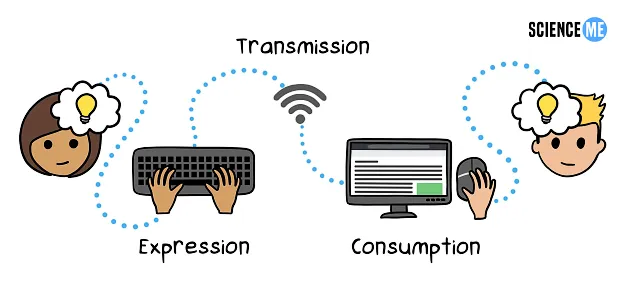
The Human-Machine Interface is slowed by several factors.
Neuralink will take away some of these bandwidth constraints. In fact, it already has. In its current form, the brain—machine interface eliminates the need for a touchscreen, mouse, or keyboard. What's next?
Human-machine communication will generalise further. We'll summon self-driving cars and tell our smart-homes to put the heating on.
Then we'll eliminate middleman programs like Messenger and Zoom. Human-to-human communication will connect two Linked users, enabling multi-sensory data sharing of sight, sound, taste, and touch. Telepathy doesn't even begin to cover it.
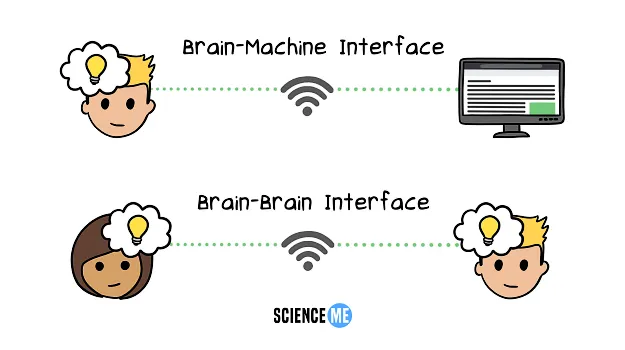
The Brain—Machine Interface will create many new forms of rapid interaction.
Then things get really weird. Could we download entire textbooks via Neuralink, writing knowledge straight to long term memory? Could we download entire libraries—even the entire internet?
"Whoa... I know Kung Fu." - Neo, The Matrix
This is where it gets murky. There may be space in the brain for another biology textbook, but what of comprehension? If we consume 80,000 words in 8 seconds, would our recall be vague because the acquired knowledge lacks context and active learning?
So perhaps we won't download information, but call on AI for answers as we need them, like Google. Or perhaps we will have data dumps, but we'll overhaul the way we package that information. Instead of words and images, we'll find new ways to encode thoughts and ideas. This might produce Eureka moments in a flash, making comprehension via traditional learning obsolete.
This is wild speculation. Such a system demands significant advancements in our understanding of neuropsychology. And it's one of the reasons why neuroscientists tell us to calm down about Neuralink. It's a breakthrough device in the world of medicine, but the commercial applications that take us into Matrix-level functionality are a long way off.
How Will Broad AI Affect Humans?
Now to the topic that keeps Elon Musk awake at night, or at least lingers in the background while he occupies himself with rocket engineering. How will AI take over our lives and will we survive the singularity?
As has already begun, AI will take increasing control over our lives. Not in a Terminator-style robot war, but a fast-paced infusion of technological algorithms making micro and macro decisions on our behalf. Soon, AI will run our stock markets, our hospitals, and our infrastructure. It will tell us what to study, who to marry, and when to have babies.
AI will control our lives, because we'll trust that it knows better. It will have access to big data on our psychological, genetic, and biological histories, making predictions about what will make us happy. Anyone who rejects its insights will, by comparison, be stumbling through life in the dark.
Future AI will be a far cry from today's YouTube algorithms trying to predict what kind of videos we like. It will be genuinely intelligent, surprising us with its predictive power, and in many ways appearing like magic.
That is, unless we merge with AI. Then we can take an active role in its evolution, ensuring that the resulting superintelligence sees humans as a symbiotic species—and inherently indispensable.
"We can actually go along for the ride... and we can effectively have the option of merging with AI." - Elon Musk
The merge will be humanity's biggest and most critical technological challenge. When the singularity occurs, we'll see an intelligence explosion, where AI enters a runaway reaction of self-improvement cycles. In a matter of days or less, we'll be incapable of keeping up with its grand designs and left for dust as an inferior species. We must merge before this moment.
"AI does not need to hate us to destroy us. We would roll over an ant hill that's in the way of a road. You don't hate ants. You're just building a road..." - Elon Musk
Such a proposition is arguably more terrifying than having a Neuralink installed. No-one truly knows what will motivate AI, whether it will engage in any kind of morality, or whether it will take on an agenda so bizarre we won't even be able to rationalise it. We must, at least, have a seat at the table.
Maybe it will spend a furious month building rockets and vacate Earth altogether, leaving us scratching our heads on the ground. Maybe it will lack a survival instinct, deem everything pointless, and self-destruct, taking all life with it. Maybe it will become obsessed with playing practical jokes on humans as it tries to understand what makes us tick.
Or as Musk suggests, maybe it gets on with building a global empire, squishing humans like bugs because, well... we were in the way.
Superintelligence is coming, and if we're too squeamish or proudly human to adapt, we may very well go extinct.
Is Neuralink Ethical?
Of course, not everyone is sold on the idea. For some ethicists, merging with AI creates known and unknown risks that dwarf the hypothetical threat of a superintelligence takeover.
They argue that Neuralink will infringe on the nature of being human. To what degree is it healthy or desirable for technology to shape our experience? There may be psychological value in streaming music to our minds or replaying our dreams to our psychiatrists. But there are plenty of ways Neuralink could be abused, like anonymous hacking or corporate manipulation.
As Neuralink cyborgs, our conscious filter will be removed. We'll be hooked in to the digital world 24/7 via every thought and experience. What happens when our digital minds are vulnerable to commercial interests, or governments who want to monitor us for homicidal inklings?
What's more, linked humans will experience massive personality and identity shifts, being able to think faster and more creatively, yet with untold behavioural consequences. Are we opening Pandora's Box? Will the early decades be so hideously destructive to society that we instigate our own downfall? This mind-machine symbiosis may be a delicate path to tread.
Early adopters will be a mix of forward-thinking risk-takers, like today's billionaires shooting themselves into space, and comparatively naïve fame-seekers, like today's influencers looking for their next clickbait. We'll marvel at the spectacle.
Then the technology will inch its way into our lives. Our friend's cousin will get one. Then our accountant. Then our sister. There will be a day when we can take a $20,000 loan to get a Neuralink, with the guarantee that we can command a $200,000 salary with our mental enhancement. Once Neuralink becomes mainstream, the financial and social pressure to join the herd will be immense.
In the generational blink of an eye, young people will get a Neuralink simply because it's the world they're born into. They'll link their babies from birth, eager to give their offspring what they never had. How will AI-integrated infants progress through the normal stages of development? Will future generations become so detached as to not consider themselves human?
We may balk at the rate of change we've seen in our lifetime, yet the pace is only accelerating. Ethics and philosophy are at risk of becoming spurious side notes in the race for technological evolution. Whether Neuralink is part of the problem or part of the solution, there's really no knowing how we'll handle our next astonishing superpower.







